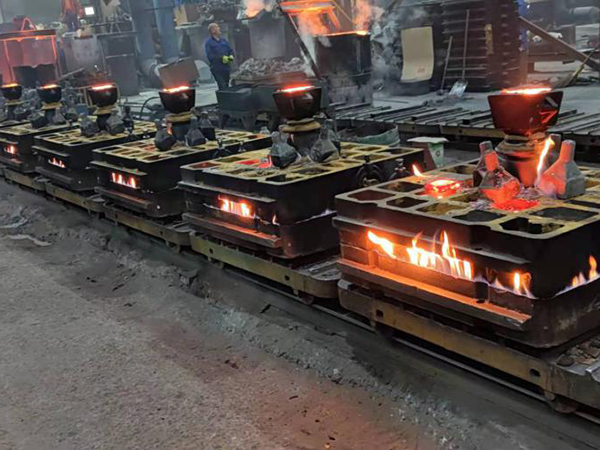Understanding Sand Casting Tolerances Importance and Implications
Sand casting is a widely used manufacturing process for producing metal parts, distinguished by its ability to create complex geometries and large components. One of the critical aspects of this process is the concept of tolerances. Tolerances in sand casting refer to the permissible limits of variation in the dimensions and shapes of the casted products. Understanding these tolerances is essential for ensuring the quality, functionality, and performance of the final components.
What Are Sand Casting Tolerances?
In the context of sand casting, tolerances can be defined as the differences between the desired dimensions of a part and the actual dimensions that can be achieved during the casting process. These tolerances can be influenced by several factors, including the properties of the sand, the design of the mold, the pouring temperature, and the cooling rate of the metal. The general tolerances for sand casting may range from ±0.5 mm to ±5 mm, depending on the size and complexity of the part and the specifications set by the industry standards or customers.
Factors Affecting Tolerances
1. Material Characteristics The type of metal being cast greatly affects the tolerances. For instance, metals with higher thermal expansion rates may result in more dimensional changes during cooling, necessitating larger tolerances.
2. Mold Design The design of the mold plays a crucial role in achieving dimensional accuracy. Complex designs may introduce more potential for errors. Practicing precise mold-making techniques can minimize deviations from intended dimensions.
3. Casting Process Variables Variables such as pouring temperature, cooling rates, and the method of metal partitioning can influence the final dimensions of the casting. For example, an excessively high pouring temperature can lead to defects like shrinkage, thereby affecting tolerances.
4. Pattern Shrinkage Patterns used to form the molds are typically made from materials that behave differently from the final cast metal when exposed to heat. This difference can affect the dimensions of the final product, requiring careful calculations to determine the optimal pattern size to counteract shrinkage.
sand casting tolerances

The Importance of Tolerances in Sand Casting
Understanding and controlling tolerances is vital for several reasons
1. Fit and Functionality Components often need to fit together perfectly, particularly in assemblies where gaps can lead to improper functioning. Tight tolerances ensure that parts will not only fit together but also work effectively.
2. Cost Efficiency Maintaining appropriate tolerances can save costs associated with rework or scrap due to defects. If parts do not meet the required specifications, they may need to be recast or machined, leading to additional labor and material costs.
3. Quality Assurance In industries such as aerospace and automotive, where safety is paramount, adhering to tight tolerances can be a matter of compliance with regulations and standards. Failing to meet these specifications can not only result in economic losses but may also compromise safety.
4. Custom Requirements Different industries and applications may have specific tolerance requirements. By understanding the tolerances, manufacturers can better meet customer specifications and improve client satisfaction.
Conclusion
In summary, tolerances in sand casting are a fundamental aspect that affects the quality, performance, and economic viability of cast components. By grasping the influencing factors and the importance of tolerances, manufacturers can optimize their processes, reduce defects, and enhance the overall quality of their products. As industries evolve and demand more complex geometries and precision, the understanding of sand casting tolerances will continue to play an integral role in advanced manufacturing practices.
Post time:Aug . 13, 2024 13:26
Next:Affordable Sand Casting Solutions for Cost-Effective Manufacturing and Quality Production Techniques
